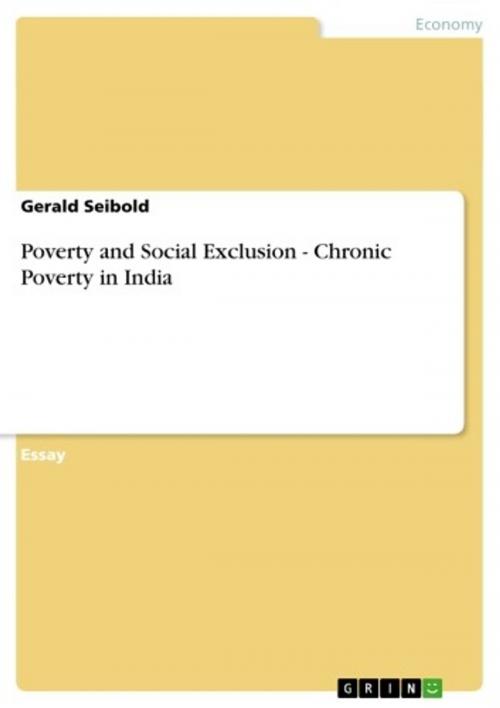Poverty and Social Exclusion - Chronic Poverty in India
Business & Finance, Economics, Urban & Regional| Author: | Gerald Seibold | ISBN: | 9783640091355 |
| Publisher: | GRIN Publishing | Publication: | September 8, 2007 |
| Imprint: | GRIN Publishing | Language: | English |
| Author: | Gerald Seibold |
| ISBN: | 9783640091355 |
| Publisher: | GRIN Publishing |
| Publication: | September 8, 2007 |
| Imprint: | GRIN Publishing |
| Language: | English |
Essay from the year 2007 in the subject Economics - Case Scenarios, grade: 1,0, University of Linz, course: Armut und soziale Ausgrenzung, language: English, abstract: Poverty was and remains among the gravest and most intractable problems worldwide. While still being a matter of concern for most governments, this issue is of paramount importance for developing countries, where most of the world's impoverished live, and where a large proportion of the population suffers severe and often multi-dimensional deprivations. The incidence of poverty varies greatly between countries and regions, but generally South Asia and sub-Saharan Africa are the regions most plagued both in terms of severity and proportion of the population affected. According to statistics a fifth of all people on earth live on less than $1 a day, and almost half of them are in South Asia.1 India, being a part of one of the most poverty-stricken regions of the world, is not spared the fate of its neighbours. Estimates of the number of people below the poverty line vary between 260 and 400 million, making India the country with the largest number of poor people in the world. For most of them poverty is both severe and prolonged. Many spend the better part of their lives impoverished, and some even die without ever knowing the delights of financial security, having suffered deprivations in all aspects of their existence all life long.
Essay from the year 2007 in the subject Economics - Case Scenarios, grade: 1,0, University of Linz, course: Armut und soziale Ausgrenzung, language: English, abstract: Poverty was and remains among the gravest and most intractable problems worldwide. While still being a matter of concern for most governments, this issue is of paramount importance for developing countries, where most of the world's impoverished live, and where a large proportion of the population suffers severe and often multi-dimensional deprivations. The incidence of poverty varies greatly between countries and regions, but generally South Asia and sub-Saharan Africa are the regions most plagued both in terms of severity and proportion of the population affected. According to statistics a fifth of all people on earth live on less than $1 a day, and almost half of them are in South Asia.1 India, being a part of one of the most poverty-stricken regions of the world, is not spared the fate of its neighbours. Estimates of the number of people below the poverty line vary between 260 and 400 million, making India the country with the largest number of poor people in the world. For most of them poverty is both severe and prolonged. Many spend the better part of their lives impoverished, and some even die without ever knowing the delights of financial security, having suffered deprivations in all aspects of their existence all life long.















